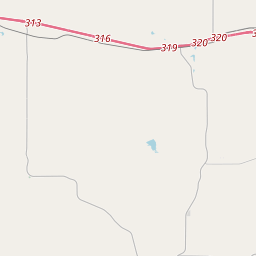Belle Plaine Cemetery
Historical marker location:






Residents of the short-lived community of Belle Plaine were burying their dead at this site as early as 1878. Although the presence of unmarked graves suggests earlier possible usage, the oldest marked grave, that of sixteen-year-old Virgil Hill, dates to that year. Belle Plaine residents informally established a community cemetery here on vacant land. The graveyard was located within a larger tract of land that was owned by the state until 1861 and later by several railroad companies. Its last private owner, the Texas & Pacific Railway Company, purchased the tract that included this graveyard in 1879 when it anticipated routing its railroad through Belle Plaine. However, in 1883 the route was changed to pass through nearby Baird. In response, the railway company deeded the cemetery property to Callahan County the following year. Though the community of Belle Plaine had declined by 1909, burials have continued to take place. Those interred here include area pioneers, their descendants, and veterans. The historic burial ground remains an important cultural resource in this area.
(1992)
As one of the most visible programs of the Texas Historical Commission (THC), historical markers commemorate diverse topics in Texas history, including: the history and architecture of houses, commercial and public buildings, religious congregations, and military sites; events that changed the course of local and state history; and individuals who have made lasting contributions to the state, community organizations, and businesses.
The first domed stadium in the world, the Astrodome, was built in Houston in 1965 and hosted numerous sporting events and concerts over the years.
In 1858, the Texas Legislature officially established Callahan County, naming it after James Hughes Callahan, a ranger and soldier in the Texas Revolution. The county's early economy relied heavily on agriculture, with cotton being the main cash crop and cattle ranching also playing a significant role.
During the Civil War, like many regions of Texas, Callahan County experienced unrest and hardship. After the war, however, the county quickly recovered, and the construction of the Texas and Pacific Railway in the late 19th century further fueled growth and development. The railroad brought new settlers, boosted trade, and led to the establishment of towns like Baird, Cross Plains, and Clyde.
Throughout the 20th century, Callahan County continued to evolve and diversify its economy. Oil was discovered in the area in the 1920s, leading to the establishment of oilfields and the growth of the petroleum industry. Agriculture remained important, with crops like wheat, milo, and sorghum becoming significant, and ranching continued to thrive.
Today, Callahan County is a vibrant community that honors its history while embracing modern advancements. Its rich agricultural heritage, coupled with a growing oil and gas industry, makes this county a resilient and prosperous area within the state of Texas.
Callahan County Timeline
This timeline provides a glimpse into the major events and milestones that have shaped the history of Callahan County, Texas.
- 1854 - Callahan County is created and named after James Hughes Callahan, a Texas Ranger and legislator.
- Late 1850s - Settlers begin to arrive in the area, primarily from the southern United States.
- 1861-1865 - Callahan County, like the rest of Texas, is greatly impacted by the American Civil War.
- 1872 - Baird is established as the county seat.
- Early 1880s - The Texas & Pacific Railway is built through Callahan County, boosting economic growth.
- Early 1900s - Agriculture, particularly cotton farming, becomes a major industry in the county.
- 1923-1924 - Oil is discovered in Callahan County, leading to a boom in production and economic development.
- 1940s - Callahan County experiences a decline in population due to the effects of World War II.
- 1980s-1990s - The economy diversifies with the growth of manufacturing and retail sectors.
- 2000s - Callahan County continues to be primarily rural, with agriculture and oil production playing significant roles in the local economy.